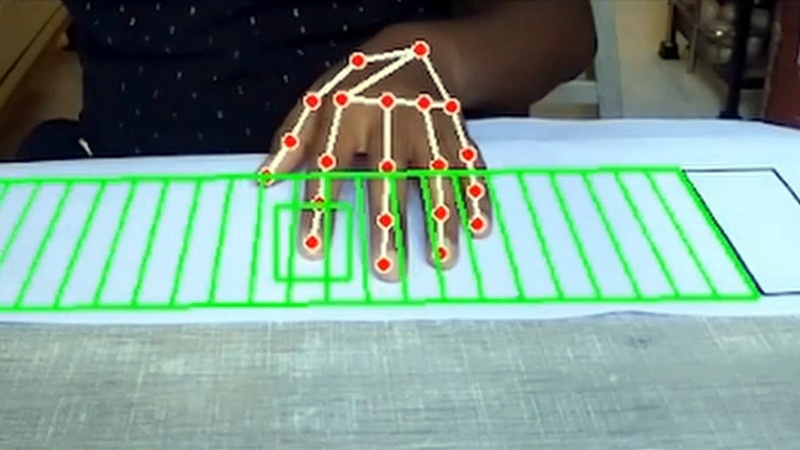A couple of decades ago one of *the* smartphone accessories to have was a Bluetooth keyboard which projected the keymap onto a table surface where letters could be typed in a virtual space. If we’re honest, we remember them as not being very good. But that hasn’t stopped the idea from resurfacing from time to time.
We’re reminded of it by [Mayuresh1611]’s paper piano, in which a virtual piano keyboard is watched over by a webcam to detect the player’s fingers such that the correct note from a range of MP3 files is delivered.
The README is frustratingly light on details other than setup, but a dive into the requirements reveals OpenCV as expected, and TensorFlow. It seems there’s a training step before a would-be virtual virtuoso can tinkle on the non-existent ivories, but the demo shows that there’s something playable in there. We like the idea, and wonder whether it could also be applied to other instruments such as percussion. A table as a drum kit would surely be just as much fun.
This certainly isn’t the first touch piano we’ve featured, but we think it may be the only one using OpenCV. A previous one used more conventional capacitive sensors.
















Is there a link to this? I only see links to the paper piano and the capacitive piano.
“This Piano does not exist”
The piano that doesn’t exist can be played, but the pipe that can be seen cannot be smoked.
parce que c’est n’est pas une pipe?
This keyboard might work to make “toy piano” sounds but it will be FAR from a real piano. There is no velocity sensing, no after touch sensing and no release velocity sening.
Oh dang I was looking to replace my baby grand
Oh I won’t need to get the Osmose keyboard or a LinnInstrument either. It would be handy at a quiet bar though.
From the article highlight photo it looks like there are no black keys?
It is related to my project https://hackaday.io/project/194264-laleludrums